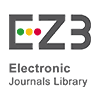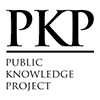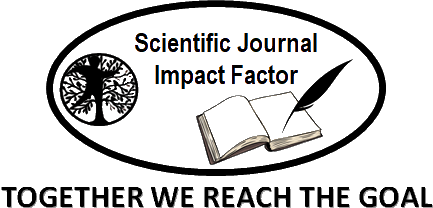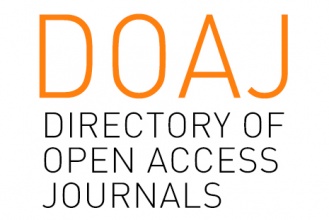The Importance of Establishing Harmonious School Culture to Improve Quality of Education in Indonesia
Abstract
Keywords
Full Text:
PDFReferences
Abdillah, M. R. (2023). Teacher communication strategies in an effort to prevent bullying at the Mangunan Purwomartani: Experimental Elementary School Kalasan Sleman. Symposium of Literature, Culture, and Communication (SYLECTION).
Aliazas, V. M., & Chua, E. N. (2021). Work Culture and Learning Organization Practices in Promoting Work Productivity among Public Elementary School Teachers. International Journal of Educational Management and Development Studies.
Banwo, B. O., Khalifa, M. A., & Seashore Louis, K. (2021). Exploring trust: culturally responsive and positive school leadership. Journal of Educational Administration.
Barualogo, I. S. (2022). Understanding Bullying Cases in Indonesia: Handbook of Children's Risk, Vulnerability and Quality of Life, International Handbooks of Quality of Life.
Batlukov, M. (2019). Questions to Identify and Prevent Sexual Violence Against Children. Criminalistics and Forensic.
Bradshaw, C. P. (2015). Overlapping verbal, relational, and physical bullying and victimization: Evidence from the National Survey of Children's Exposure to Violence . Psychology of Violence, 266-275.
Chen, J. K. (2010). School Violence in Taiwan: Examining How Western Risk Factors Predict School Violence in An Asian Culture. Journal of Interpersonal Violence.
Chuni, W., & Hee, A. D. (2018). The Relationships among Social Support, Positive Academic Emotion, Happiness, and School Engagement: Comparison between Korean and Chinese High School Stduents. Journal of Education & Culture.
Cinnamond, A. (2017). Human Resource Management and Building A Positive School Culture.
Claudet, J. G. (2024). From High Discipline Referrals to High-Engagement Classrooms: A Design-Based Approach to Creating a Campus-Wide Culture of Positive Learning Support for At-Risk Student Populations through Transforming Educators' Instructional Teaming Practices. Advances in Social Sciences Research Journal.
Ferreira, M. M. (2020). Promoting Sustainable Social Emotional Learning at School through Relationship-Centered Learning Environment, Teaching Methods and Formative Assessment. Journal of Teacher Education for Sustainability, 21-36.
Flannery, D. J. (2013). Violence and school shootings. Current Psychiatry Reports.
George, M. W. (2008). The Elements of Library Research: What Every Student Needs to Know. Princeton: Princeton University Press.
Haddon, A. G. (2005). Evaluating Emotional Literacy in Schools: The Development of the School Emotional Environment for Learning Survey. Pastoral Care in Education, 16 - 5.
Hadiwinata, K. R. (2023). Legal Protection Against Victims of Crime of Sexual Violence in Higher Education Environment. ICLSSE.
Harris, I. (2011). History of Peace Education. In Handbook on Peace Education.
Kim, Y. S. (2006). School Bullying and Youth Violence. Archieves of General Psychiatry.
Leverett, P., D'Costa, S., & Baxa, M. (2022). The Impact of Student-Teacher Relationships on Black Middle School Boys. School Mental Health, 254-265.
Lombardo, L. X. (2015). Peace Education and childhood. Journal of Peace Education.
Lopez-Orozo, C. F.-C. (2022). A systematic mapping literature review of education around sexual and gender diversities. Front Sociol.
Loreta, N. C. (2010). Peace Education: A Pathway to a Culture of Peace. Center for Peace Education. Miriam College.
Ortega, Y. (2020). Using Collaborative Action Research to Address Bullying and Violence in a Colombian High School EFL Classroom.
Panindranauth, M. (2023). Principals' Roles in Developing a Positive School Culture Through Communication and Building Relationships. Journal of Educational Leadership in Action.
Paryono, A. N., & Oktarini, O. (2023). Building Positive Character, Negative Effects Environmental Protection and Wisdom Local Culture by the Applying of Full Day Schools in Rural Areas. International Journal of Educational Management and Innovation.
Patterson, M. M., Fite, P. J., Zucker, J. K., & Abel, M. R. (2021). Critical Consciousness among rural adolescents: the roles of school connection and positive relationships with teachers. Social Psychology of Education, 1-18.
Reiss, M. J., & White, J. H. (2014). An aims-based curriculum illustrated by the teaching of science in schools. Curriculum Journal, 76-89.
Sameshima, P. K. (2020). Novel, Educational, and Legal Responses to Technology-Facilitated Sexual Violence.
Segredo, M. R., Cistone, P. J., & Reio, T. G. (2017). Relationships Between Emotional Intelligence, Leadership Style, and School Culture. International Journal Adult Vocational Educational Technology, 25-43.
Sharma, U., Roodenburg, J. W., & Rayner, S. G. (2015). Building Independence and Wellbeing into a Positive School Culture.
Sims-Schouten, W. (2019). Bullying, School Violence and Climate in Evolving Contexts: Culture, Organization and Time. Children and Society.
Skaalvik, E. M., & Skaalvik, S. (2023). Collective Teacher Culture and School Goal Structure: Associations with teacher self-efficacy and engagement. Social Psychology of Education, 1-25.
Sumiati, I., & Lo, S. J. (2022). Employee Engagement Mediates The Achievement Motivation and Organizational Culture Towards Teacher Performance at Bina Insan Mandiri School, Jakarta. Dinasti International Journal of Education Management And Social Science.
Uzzaman, M. A., & Karim, A. R. (2016). The Psychometric Properties of School Engagement Scale in Bangladeshi Culture. Journal of the Indian Academy of Applied Psychology, 143.
Wantu, T. (2023). Description of Bullying Behavior of High School Students in Bone Bolango District. UNICSSH, 206-210.
Young, S. K., Leventhal, B. L., Koh, Y. J., Hubbard, A., & Boyce, W. T. (2006). School Bullying and Youth Violence: Causes or Consequences of Psychopathologic behavior? Archieves of General Psychiatry.
Zhou, T., & Zhang, Y. (2022). Exploring the Moral Education of Primary and Secondary Schools from the Perspective of Greater Civic Education Effective Path. Frontiers in Educational Research.
DOI: http://dx.doi.org/10.18415/ijmmu.v11i6.5908
Refbacks
- There are currently no refbacks.
Copyright (c) 2024 International Journal of Multicultural and Multireligious Understanding

This work is licensed under a Creative Commons Attribution-NonCommercial-NoDerivatives 4.0 International License.
https://ijmmu.com
editor@ijmmu.com
facebook.com/ijmmu
Copyright © 2014-2018 IJMMU. All rights reserved.



































